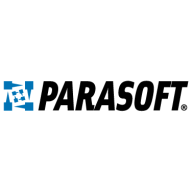

Parasoft Development Testing Platform and Tricentis qTest are both robust tools in the software testing category. Users appear more satisfied with Tricentis qTest due to its feature set and ease of deployment, while Parasoft gains favor for its support and pricing.
Features: Parasoft Development Testing Platform provides in-depth code analysis, compliance with industry standards, and comprehensive test coverage reports. Tricentis qTest offers integration with agile and DevOps workflows, flexible test management capabilities, and a range of features adaptable to modern software development practices.
Room for Improvement: Parasoft Development Testing Platform needs better documentation, a more streamlined setup process, and enhancements in user interface design. Tricentis qTest could improve its reporting functionalities, customer support speed, and the learning curve for new users.
Ease of Deployment and Customer Service: Parasoft Development Testing Platform is recognized for smooth deployment but has mixed reviews regarding customer service. Tricentis qTest is praised for quick and easy deployment within agile environments and has higher satisfaction in customer support.
Pricing and ROI: Users appreciate the competitive pricing and perceived value of Parasoft Development Testing Platform, though some see it as requiring a larger initial investment. Tricentis qTest, while potentially higher in cost, is viewed as delivering better ROI due to its extensive features and alignment with agile methodologies.
| Product | Market Share (%) |
|---|---|
| Tricentis qTest | 14.4% |
| Parasoft Development Testing Platform | 1.3% |
| Other | 84.3% |


| Company Size | Count |
|---|---|
| Small Business | 3 |
| Midsize Enterprise | 3 |
| Large Enterprise | 13 |
Parasoft DTP aggregates the results from across testing practices, providing intelligent and continuous monitoring of the testing outcomes for greater visibility into what is working — and what isn’t. Includes:
- Comprehensive Reports & Dashboards
- Preconfigured compliance reporting
- Customized Advanced Analytics
- Interactive Navigation of Results
- Traceability
Tricentis is the global leader in enterprise continuous testing, widely credited for reinventing software testing for DevOps, cloud, and enterprise applications. The Tricentis AI-based, continuous testing platform provides a new and fundamentally different way to perform software testing. An approach that’s totally automated, fully codeless, and intelligently driven by AI. It addresses both agile development and complex enterprise apps, enabling enterprises to accelerate their digital transformation by dramatically increasing software release speed, reducing costs, and improving software quality.
We monitor all Test Management Tools reviews to prevent fraudulent reviews and keep review quality high. We do not post reviews by company employees or direct competitors. We validate each review for authenticity via cross-reference with LinkedIn, and personal follow-up with the reviewer when necessary.